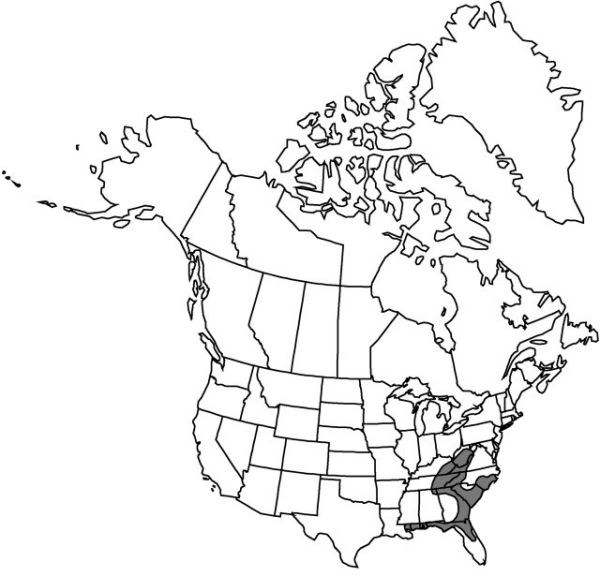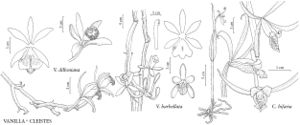Difference between revisions of "Cleistes bifaria"
Lindleyana 7: 65. 1992.
FNA>Volume Importer |
FNA>Volume Importer |
(No difference)
| |
Revision as of 19:29, 24 September 2019
Plants (12–)15–46(–64) cm (in flower). Leaves: blades on flowering stems, (2.5–)45–145 × (4–)6–25 mm. Flowers: sepals 24–55 × (2–)3–5 mm; petals 21–36 × 6–10(–12) mm; lip 21–33(–38) × 13–16 mm, central keel relatively thick, 2.4–2.6 mm wide, very slightly grooved, groove 0.3 mm deep and verrucose or braided with 5–7 discontinuous ridges; column 13–19 mm. Capsules (9–)27–41(–81) × (3.2–)4–8(–8.5) mm. 2n = 18.
Phenology: Flowering Apr–May (coastal plain) –Jul (mountains).
Habitat: Savannas, meadows, openings in oak or pine woodlands, mountain habitat often xeric, in acidic soil
Elevation: 0–1000 m
Distribution

Ala., Fla., Ga., Ky., La., Miss., N.C., S.C., Tenn., Va., W.Va.
Discussion
A station in Barbour County, West Virginia, is 240 km north of other stations and may be a result of introduction (K. B. Gregg 1989).
Cleistes bifaria has been treated as a variety of the following species; it is readily separated by its relatively short column, which is correlated with the relatively small size of other floral parts, and differences in lip keel. It is, to a large extent, isolated from the following taxon by geographic distribution and flowering time where their distributions overlap (P. M. Catling and K. B. Gregg 1992).
